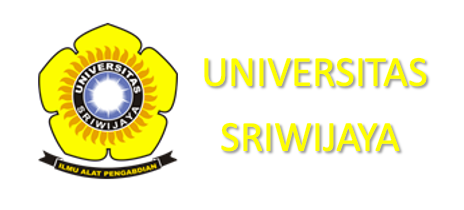APLIKASI GEOLISTRIK UNTUK MENENTUKAN POTENSI AKUIFER AIR TANAH STUDI KASUS DI DESA SUKOMORO, TALANG KELAPA, BANYUASIN, SUMATERA SELATAN
Abstract
ABSTRAK: Tata guna lahan daerah penelitian pada Desa Sukomoro, Kabupaten Banyuasin Sumatera Selatan adalah pemukiman penduduk, industri, dan pertambangan. Meningkatnya jumlah penduduk membuat kebutuhan air setiap tahunnya terus meningkat. Tujuan dilakukan penelitian ini adalah untuk menentukan potensi akuifer airtanah dengan menggunakan metode geolistruk konfigurasi Schlumberger. Metode geolistrik merupakan salah satu metode yang sering digunakan untuk menentukan potensi air tanah. Akuisisi data pada lokasi penelitian dilakukan sebanyak 5 titik menggunakan konfigurasi Schlumberger dengan panjang elektroda arus 136 – 600 m dan panjang lintasan elektroda potensial 8 m. Pengolahan data dilakukan dengan menggunakan software IP2win dan Rockwork. Hasil interpretasi geolistrik dan informasi hidrologi daerah penelitian menghasilkan 5 lapisan batuan yaitu: Lapisan permukan ( Topsoil ) memiliki nilai resistivitas 0 – 8 Ohm.m. Lapisan batupasir memiliki nilai resistivitas 10 – 245 Ohm.m. Lapisan batuserpih memeiliki nilai resistivitas 110 – 147 Ohm.m. Lapisan batulanau memeiliki nilai resistivitas 5 – 34 Ohm.m. Lapisan batulempung memiliki nilai resistivitas 2- 61 Ohm.m. Sebararan potensi air tanah digambarkan dalam bentuk peta Isoresistivity. Sayatan geolistrik lintasan A – A’ pada titik gl-2, dan gl-3 mencapai kedalaman 110 mdpt, dengan ketebalan akuifer air tanah 90 m. Dan sayatan geolistrik lintasan B – B’ pada titik gl-1, gl-4, dan gl-5 mencapai kedalaman 65 mdpt, dengan ketebalan akuifer air tanah 45 m. Hasil penelitian menunjukan Desa Sukomoro memiliki akuifer bebas dengan batupasir sebagai akuifernya.
Kata Kunci: Airtanah, Akuifer, Geolistrik, Sukomoro
ABSTRACT: The land use of the research area in Sukomoro Village, Banyuasin Regency, South Sumatra is residential, industrial, and mining. The increasing number of population causes the need for water every year to continue to increase. The purpose of this research is to determine the potential of the groundwater aquifer using theconfiguration geo-method Schlumberger structural. The geoelectric method is one method that is often used to determine the potential for groundwater. Data acquisition at the research location was carried out in 5 points using theconfiguration Schlumberger with a current electrode length of 136 - 600 m and a potential electrode path length of 8 m. Data processing was performed using IP2win and Rockwork software. The results of geoelectric interpretation and hydrological information in the study area resulted in 5 rock layers, namely: The surface layer ( Topsoil ) has a resistivity value of 0 - 8 Ohm.m. The sandstone layer has a resistivity value of 10 - 245 Ohm.m. The white stone layer has a resistivity value of 110 - 147 Ohm.m. The siltstone layer has a resistivity value of 5 - 34 Ohm.m. The claystone layer has a resistivity value of 2- 61 Ohm.m. The distribution of groundwater potential is depicted in the form of anmap Isoresistivity. The geoelectric section of the A - A 'trajectory at gl-2 and gl-3 points reaches a depth of 110 mdpt, with a groundwater aquifer thickness of 90 m. And the geoelectric section of the B - B 'line at gl-1, gl-4, and gl-5 reaches a depth of 65 mdpt, with a groundwater aquifer thickness of 45 m. The results showed that the village of Sukomoro has free aquifers with sandstones as the aquifer.
Keywords: Groundwater, Aquifer, Geoelectric, Sukomoro





